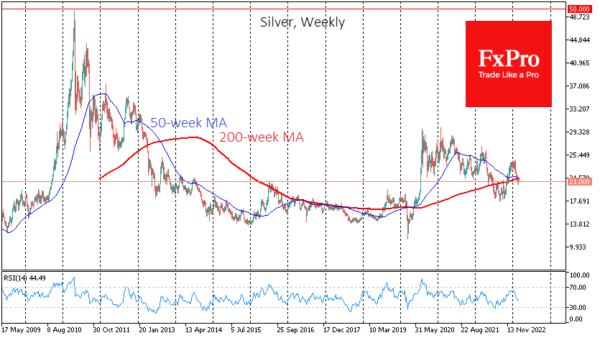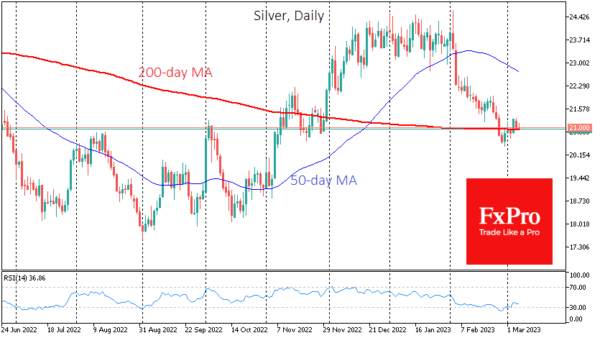For the past six trading sessions, an ounce of silver has been trading above $21.0 in both directions. The price has been falling for most of February, losing more than 17% from its high ($24.62) to its low ($20.41).
Last month’s sell-off brought the price back to the 200-day moving average and created a medium-term oversold condition, which promises to be positive in the short term, creating the potential for a return to $24.0.
At the end of last month, silver was buying back on declines to $21.0. This level also acted as local support (May and November) and resistance (August and October) several times last year. Silver was also held above this level in 2014 and 2016, reinforcing the importance of this area. In our case, silver could find extended downside support here or quickly reverse to the upside.
In addition to the historical significance of current price levels, the mid-points of key moving averages are also worth noting. Last week, the 50-week moving average fell below the 200-week moving average at $21.50. Technically, this is a bearish signal, but we now see that the 200-week is pointing up, and the price has corrected significantly in recent weeks.
On the daily timeframe, silver is now struggling around the 200-day average. It is worth noting that silver experienced strong buying from this level in late November. This level is now a magnet for bargain hunters.
The February sell-off in silver took the daily chart’s RSI into the oversold territory. A stabilisation in recent days has taken the index above 30, which often signals the exhaustion of selling momentum and the start of a corrective bounce.
Silver has a chance of forming much more than just a corrective bounce. The dollar is losing traction in the currency market, creating a new bearish reversal. Equity indices defended key technical levels last week and are enjoying an influx of new money. However, a rebound in risk appetite may need to be faster to support silver and gold as key players continue to operate in more liquid markets.














